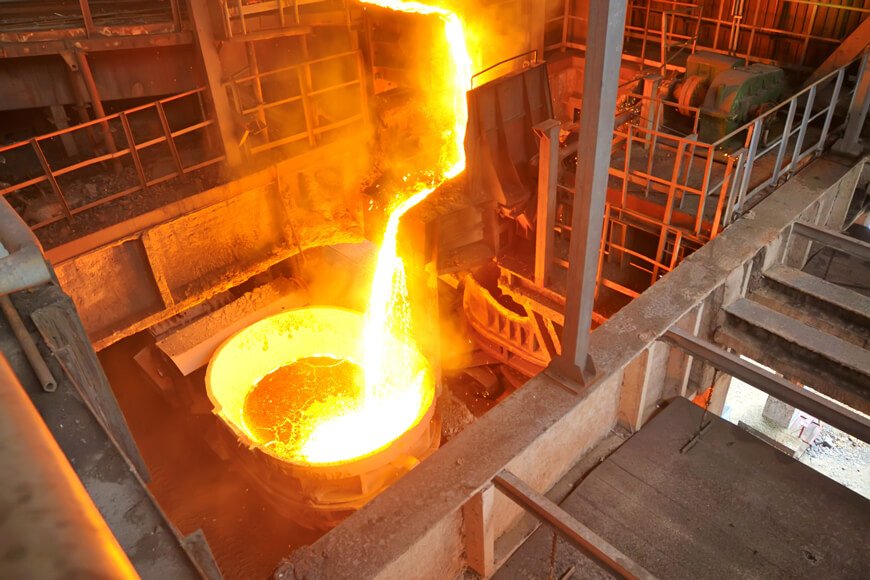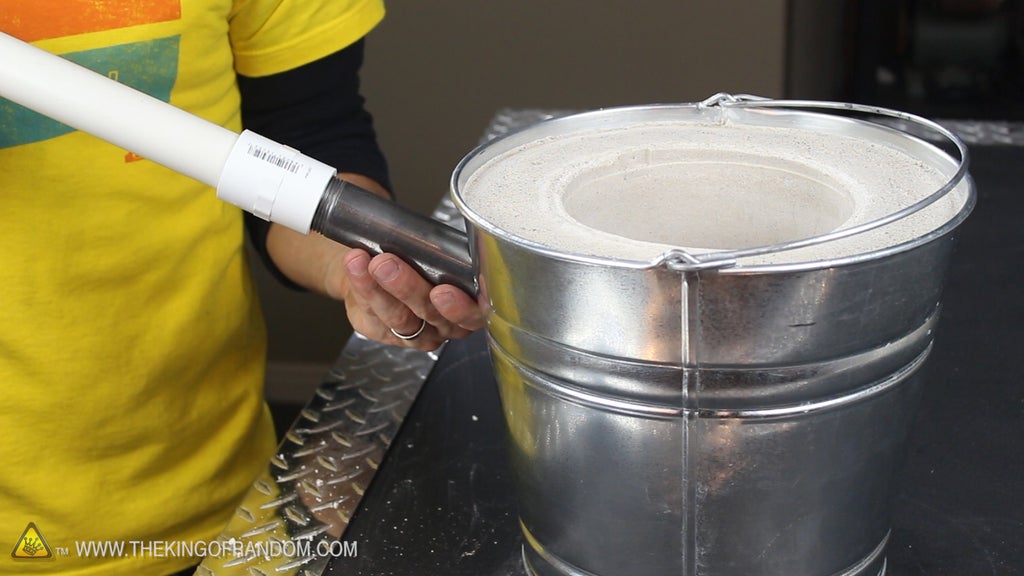Discover the Cutting-edge Strategies Made Use Of in a Metal Foundry for Superior Casting Outcomes
In today's affordable production landscape, metal foundries are increasingly embracing innovative techniques to enhance casting outcomes - Aluminum Casting. Advanced computer simulations allow for specific modeling of liquified metal behavior, while 3D printing makes it possible for fast manufacturing of complicated mold and mildews. Furthermore, green materials and automation improve procedures. These developments promise significant enhancements in performance and quality assurance. However, the effect of these modern technologies on sustainability and production methods remains to be totally checked out
Advanced Computer Simulations in Metal Casting
Advanced computer simulations have changed the metal casting procedure by enhancing precision and performance. These advanced tools permit designers to produce digital models of cast elements, allowing them to analyze and forecast the habits of molten metal during the spreading phase. By simulating different criteria such as temperature, flow rate, and air conditioning rates, manufacturers can identify prospective defects prior to physical manufacturing starts.
This positive technique decreases waste and lessens expensive errors, ultimately resulting in enhanced product top quality. Furthermore, simulations promote the optimization of mold styles, making sure that they fulfill the details demands of each job. The combination of computational liquid dynamics (CFD) and limited element evaluation (FEA) more contributes to the precision of these simulations, supplying insights that were formerly unattainable. As an outcome, progressed computer system simulations have become an essential element of modern-day metal foundries, considerably advancing the market's capabilities.
3D Printing for Molds and Patterns
3D printing has arised as a groundbreaking technique for producing mold and mildews and patterns in the metal foundry market. This technology allows the quick manufacturing of intricate geometries that typical production methods struggle to attain. By making use of additive manufacturing, foundries can produce complex layouts with reduced preparations and material waste. The capability to produce molds on need enables for higher adaptability in layout versions, assisting in faster prototyping and alterations.
3D printing can use a variety of materials, including steels and plastics, customized to details casting needs. This versatility enhances the accuracy of mold and mildews, resulting in superior casting end results with enhanced surface finishes. Furthermore, the decrease in the variety of parts needed simplifies setting up processes, better optimizing manufacturing performance. As foundries remain to take on 3D printing, they are poised to redefine sector standards, leading the way for advancement and boosted productivity in metal casting operations.
Eco-Friendly Materials and Processes
As the metal foundry market encounters enhancing pressure to decrease its environmental impact, the adoption of green materials and processes has come to be crucial. Factories are currently exploring lasting alternatives to typical products, such as using recycled steels and bio-based binders. These materials not only decrease waste however also lower energy consumption during manufacturing.
Additionally, improvements in sand casting techniques have actually caused making use of artificial sands that are much less hazardous to the setting. Foundries are likewise applying ingenious processes like liquified metal treatment that lowers exhausts and boosts the top quality of actors items.
Furthermore, water-based finishings have actually changed toxic solvents, promoting a safer work environment (Aluminum Foundry). By integrating these environmentally friendly techniques, metal foundries can substantially lower their environmental impact while maintaining high-grade casting outcomes. This change not only profits the atmosphere however also aligns with the expanding consumer need for lasting production services
Automation and Robotics in Foundry Workflow
While the Bonuses metal foundry industry embraces innovation, the combination of automation and robotics is changing operations considerably. Automated systems improve procedures such as mold and mildew making, metal putting, and casting completing, considerably boosting performance. Robotics help with the handling of hefty products, decreasing the threat of work environment injuries and ensuring more secure settings.

Further, using automated guided lorries (AGVs) maximizes product transportation within facilities, making certain prompt distribution of components to suitable workstations. By carrying out these innovations, foundries can adapt to changing needs with greater agility, eventually resulting in boosted earnings and competitiveness out there. As automation and robotics remain to evolve, they hold the prospective to redefine traditional foundry techniques and drive additional improvements in casting strategies.
Real-Time Surveillance and High Quality Control Techniques
The improvements in automation and robotics have led the means for more advanced approaches to high quality guarantee in metal foundries. Real-time tracking systems make use of innovative sensors and data analytics to track critical parameters throughout the casting procedure. These systems constantly examine variables such as pressure, product, and temperature level composition, enabling prompt detection of inconsistencies from developed requirements.
Quality assurance techniques currently include equipment learning formulas that evaluate historic information to forecast possible defects before they happen. This proactive technique minimizes waste and improves general manufacturing performance. Furthermore, integrated comments loops enable for fast modifications, guaranteeing that each casting satisfies rigid quality needs.
The application of electronic doubles-- virtual reproductions of physical assets-- has additionally changed quality control, allowing designers to mimic and optimize procedures in real-time. Together, these ingenious techniques considerably enhance the reliability and top quality of spreadings, setting new market standards in metal foundry procedures.
Often Asked Inquiries
What Kinds of Metals Are Frequently Cast in Shops?
Frequently cast metals in foundries include light weight aluminum, iron, brass, and bronze. Each metal displays company website one-of-a-kind properties, making them appropriate for various applications, such as auto components, machinery, and imaginative sculptures, enhancing their convenience in manufacturing.

The length of time Does the Casting Refine Generally Take?
The spreading procedure typically takes a number of hours to days, relying on variables such as the complexity of the mold, kind of metal used, and air conditioning demands. Each phase affects the total period substantially.
What Precaution Are in Place for Foundry Employees?

Exactly how Are Flaws in Castings Identified and Addressed?
Problems in castings are identified via aesthetic inspections and non-destructive screening techniques. As soon as discovered, foundry workers resolve them by improving processes, adjusting material structures, and applying restorative steps to assure top quality and conformity with standards.
What Is the Price Range for Metal Casting Services?
The price variety for metal casting solutions normally varies between $1 to $10 per extra pound, relying on elements such as product kind, complexity of the design, and production quantity, affecting overall rates considerably.
In today's competitive manufacturing landscape, metal foundries are increasingly taking on innovative methods to boost casting results. As the metal foundry market encounters increasing stress to decrease its ecological footprint, the adoption of eco-friendly products and processes has come to be important. Foundries are currently checking out sustainable options to traditional materials, such as making use of recycled steels and bio-based binders. By integrating these green methods, metal foundries can significantly reduce their ecological effect while maintaining high-grade spreading Metal Foundry outcomes. The improvements in automation and robotics have paved the method for more innovative approaches to quality assurance in metal foundries.